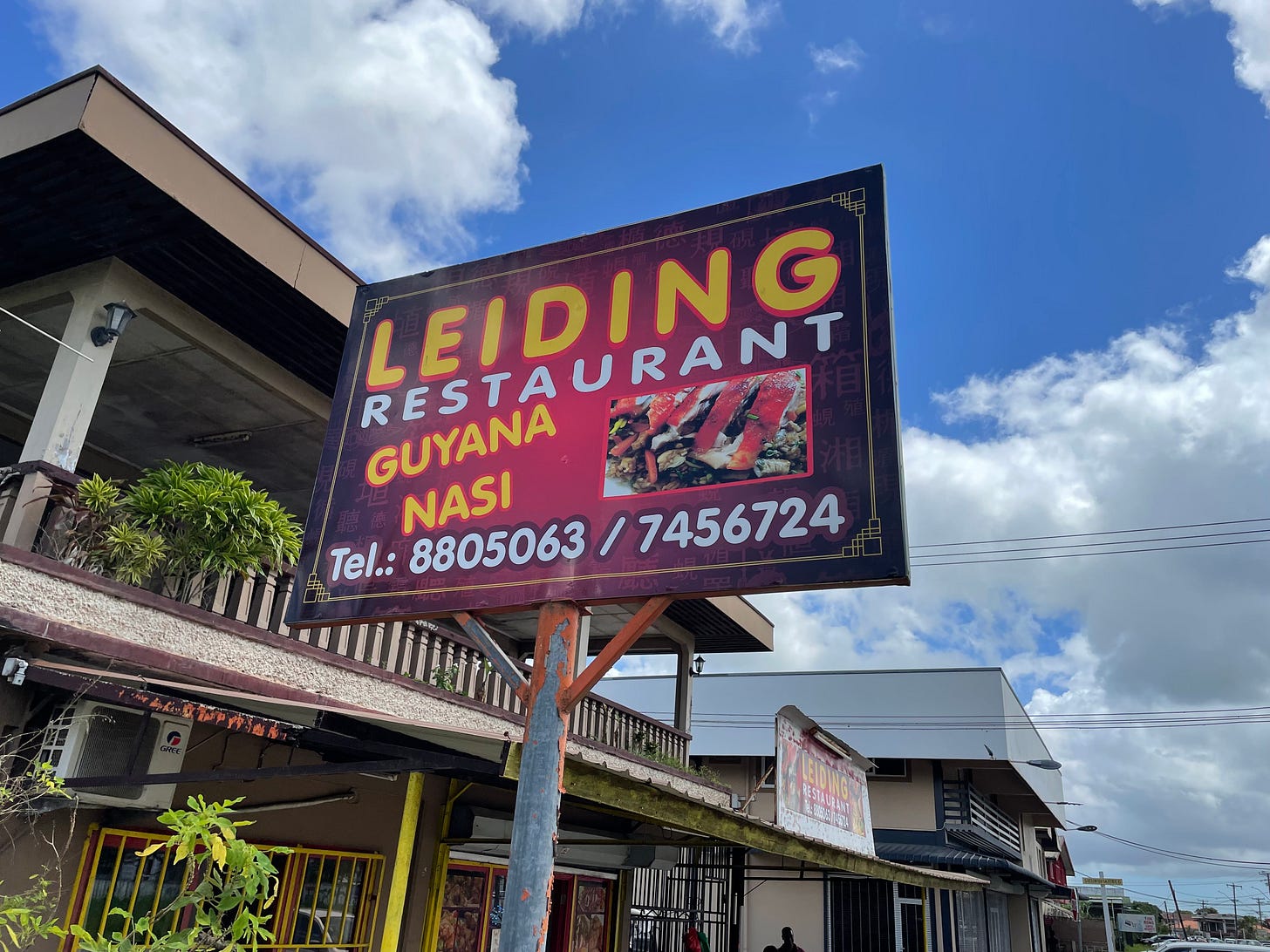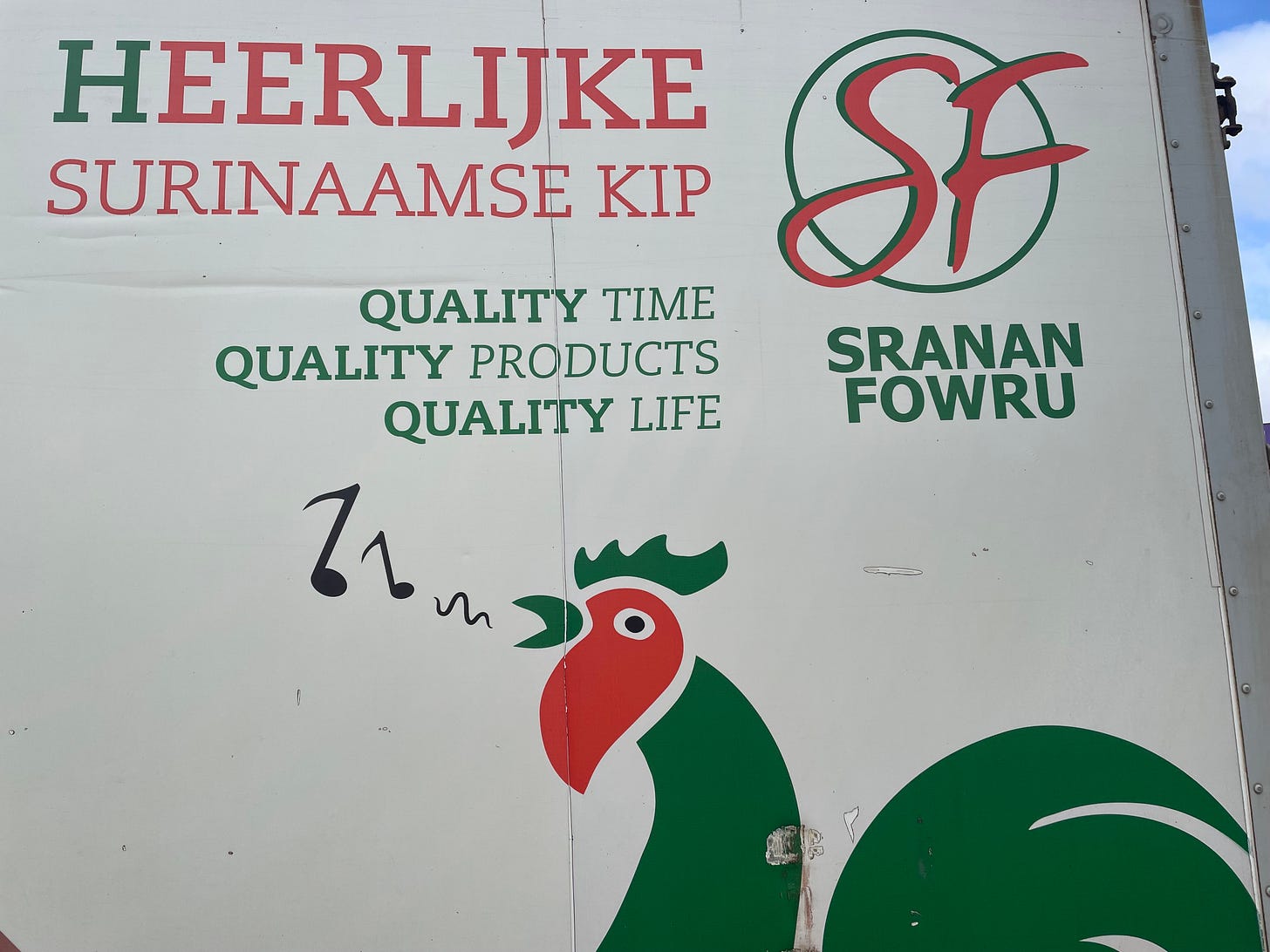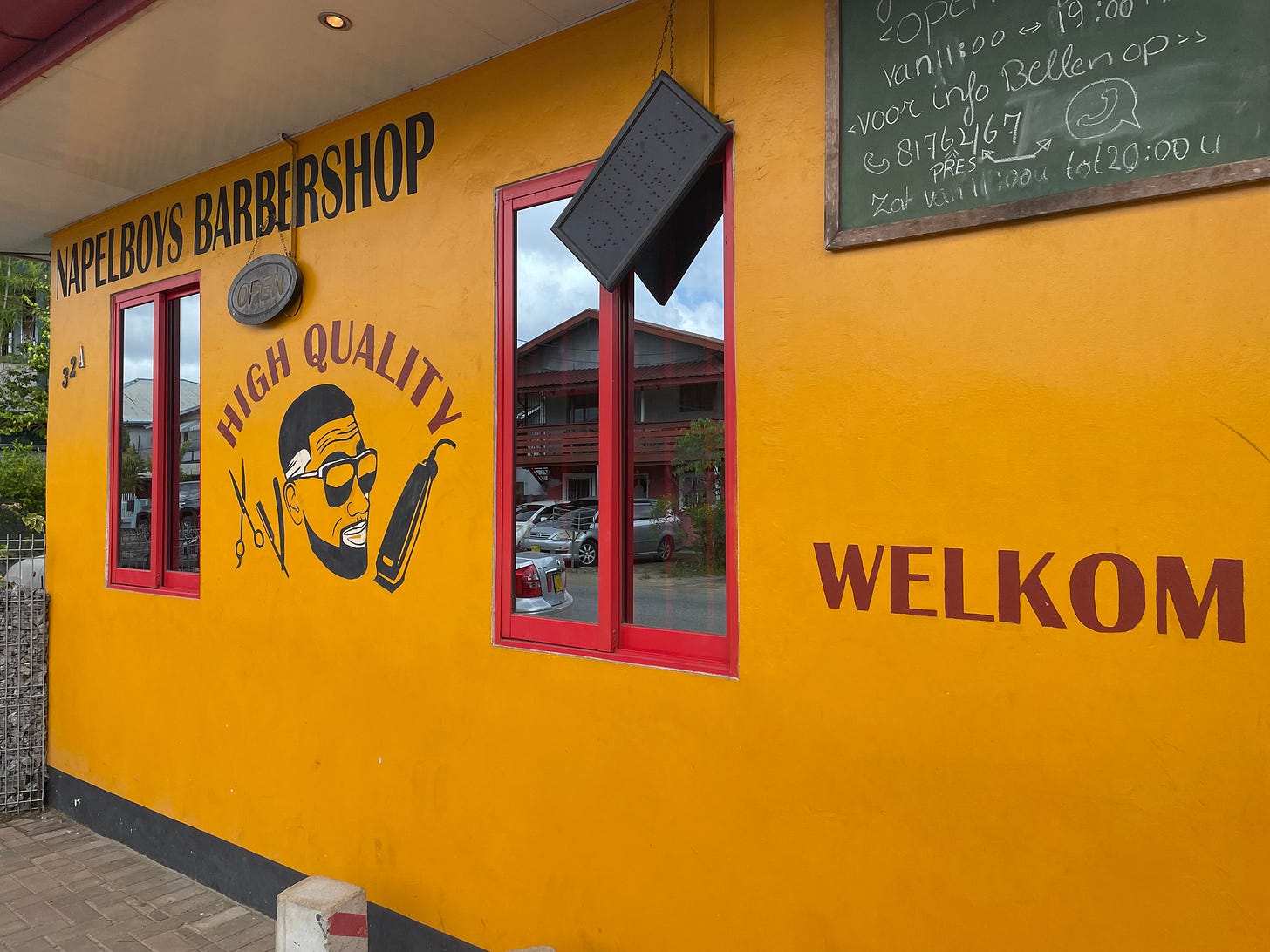Signage from Suriname’s ‘Casablanca’
The capital’s residents hail from diverse cultures and languages. Could that present an opportunity?
Suriname’s capital Paramaribo is a tropical melting pot. The signs are everywhere: street signs, store signs, handwritten signs for fruits and vegetables at outdoor markets. Signs on advertisements and invitations to weekend dance parties, sporting events and religious gatherings. Sometimes a single message is issued in several languages; other times, a single sentence is built from components of several languages.
My favorite on a recent visit was a single word, “KARMAWEG,” the name of the street in a majority South Asian neighborhood where I rented a room for six weeks. Banners and shrines to Ganesha testified to the Hindu residences, and the aroma of curry filled the evening breeze.
Karma, arguably the most well-known Indian word on the planet, is a variation of the ancient Sanskrit word for “action” or “deed.” On street maps and highways in the Dutch-speaking world, “weg” means “way,” “boulevard,” “avenue” or any broad thoroughfare when serving as the final syllable of a compound word. So, I lived on Karma Way.
Suriname is sandwiched between Guyana and French Guiana north of Brazil. Paramaribo straddles the banks of the Suriname River where it flows into the Atlantic Ocean. I was here on assignment for the International Organization for Migration, finding new homes for Afghans evacuated from Kabul in 2021. I also advised the host government on all aspects of messaging on migration.
It’s often said that more native Surinamese live in Holland than in their homeland. That is not unusual in the post-colonial era, especially in the smaller colonies of the tropics, where economic growth is meager but birthrates are not. Teachers and doctors in Suriname make as little as $200 per month. Many prefer to emigrate to Holland, where salaries are high and even menial jobs can pay in a day what most Surinamese at home earn in a month.
As natives leave, newcomers arrive to take their spots.
Like the United States, Suriname has a long history of welcoming (or at least employing) immigrants from all corners of the world. The Dutch who settled this coastal land five centuries ago brought thousands of African slaves and later replaced them with Javanese laborers. Indians began arriving around the same time, often after being imported as indentured laborers to the nearby British colonies of Guyana and Trinidad. Chinese, Jews and Arab merchants also came, as did Brazilians pushing up from the south.
Migration has persisted into the present day. Two doors down from my rental was a compound of young Cuban men, doctors who found construction work as they plotted journeys across the top of South America through Venezuela and Colombia before crossing into Panama and heading north toward the United States. Haitians, Dominicans and Africans are also in the mix, fitting in with the locals who look like them, and the Asians do likewise. Haitians often enter via Brazil, with fake documents produced by Brazilian counterfeiters that indicated Congolese citizenship.
I saw all these different migrants filling out forms and waiting for appointments at the UN compound. Most were happy to discuss their plans and journeys. Everyone seemed relieved to finally have arrived in the Western hemisphere and on the road to someplace better.
Because of all this human mobility, I came to see street signs as a metaphor for Paramaribo’s fascinating mixture of languages and people.
Above an Indonesian restaurant, I saw a sign written only in Dutch. One might surmise its owners were Buddhist from the statuette out front, although most Javanese here are Muslim. Many food shops display a Halal stamp, written in Arabic script, حلال.
Another restaurant advertised its fare in a kind of local patois. “Nasi” usually means rice and suggests Javanese cuisine, and throwing in the adjective “Guyana” suggests a nod to creole cooking. Suriname, situated between the former British Guyana and the present-day French Guiana, is “Dutch” Guyana. I couldn’t make out whether “Leiding” was a misspelling of the English word “leading” (it means the same thing in both languages) or a reference to “Leiden,” the city in the Netherlands where thousands of Surinamese now live.
Lots of signs I saw mix Dutch with a creole dialect called Sranan Tongo, which itself mixes Dutch with Javanese. Another creole, Taki Taki, rose among runaway slaves who escaped into Suriname’s jungles and reestablished “African” villages with indigenous South American tribes.
Finally, a flyer for a Sunday dance party manages to mix hip hop slang with faulty English. “Saturtday” and “copmetiton” suggest Vinod is an Indian en route to a new life in Europe or North America.
After completing my assignment, I came to see Paramaribo as something of a “Casablanca” of our era, populated by an international cast of witty and urbane yet globally displaced citizens.
What if Suriname could be persuaded to lean in to its historic diversity and market itself as a medium-term way station for folks determined to reinvent themselves somewhere beyond their birthplace borders?
The country could raise funds from foreign donors and import specialists as employment or travel agents to identify third countries that may be eager to make offers to the displaced to legally continue their journeys forward. The Cuban doctors I met might be groomed for work (and citizenship) in any number of Latin American destinations; the Brazilians might be channeled towards Portugal; the Hindi, Arabic and Chinese speakers might be directed practically anywhere there’s a labor shortage, serving the elderly or the disabled.
Immigration won’t stop, so why not make it work for the benefit of all?
Joel Millman is a journalist and community organizer based in Philadelphia. He covered immigration and Latin America for almost 30 years, mainly for The Wall Street Journal, before working as a press officer for the UN’s International Organization for Migration in Geneva. His interests include refugee protection and resettlement and assisting US communities as they pursue successful integration of migrants in their midst.






